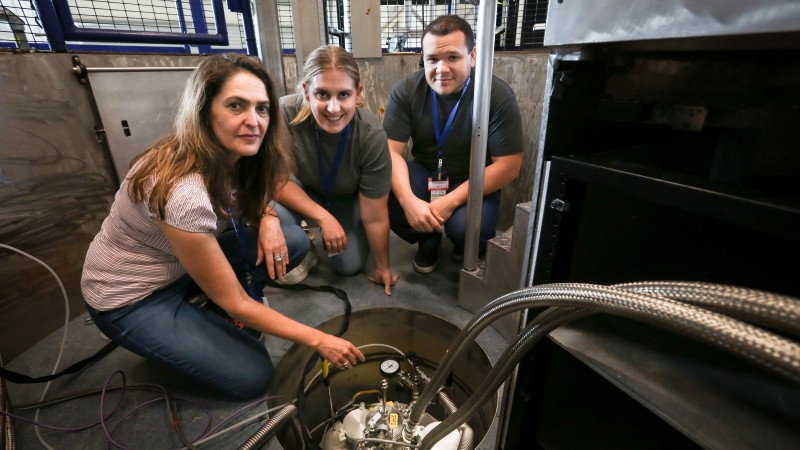As scientists and physicians search for new ways to study and understand cancer cells, one approach suggests the movement of water molecules located in these cells could potentially predict the progression of cancerous tumors and measure the potency of anticancer medications in individual patients.
Researchers from the University of Copenhagen are collaborating with Murillo L. Martins from the Pontifical Catholic University of Goiás to analyze this relationship at the Department of Energy’s Oak Ridge National Laboratory. They are using the BASIS instrument at ORNL’s Spallation Neutron Source to observe how the behaviors of water molecules reflect the status of the cells.
“Using neutrons at BASIS helps us understand cellular water dynamics really well,” said principal investigator Heloisa Bordallo. “Water is everywhere, and it will move differently depending on whether a cell is healthy or unhealthy.”
Neutrons’ particular sensitivity to hydrogen makes them ideal for easily measuring cellular water dynamics in a controlled and biologically accurate environment without damaging live cells.
The researchers are investigating how cellular water changes when breast cancer cells are treated with the anticancer drug paclitaxel that inhibits the cells’ ability to move and divide properly. Comparing how the water molecules move before and after treatment demonstrates the precise effects of the drug and provides insights into the relationship between water dynamics and cell behavior.
“We are taking cancer cells and measuring them once before treatment and again afterwards,” Bordallo explained. “We want to see whether treating cancer cells will affect the bulk-like intracellular water or the water in the cells that has closer contact with proteins and membranes.”
Although cells consist mostly of water molecules, previous studies have not fully considered the importance of cellular water for evaluating cancer cells and the drugs designed to weaken them. Physicians may eventually be able to better evaluate cancer development and regression in patients by studying the mobility of cellular water via imaging systems such as MRI machines, which use magnets to align the hydrogen atoms of water molecules in the body. Medical professionals rely on this technology to detect and monitor cancerous tumors.
“Modern medical resources already show us how water molecules behave in the human body, but the ability to quickly interpret changes in cancer cell behavior based on cellular water dynamics would be an additional asset to help identify which medications and treatment approaches are the most effective,” Bordallo said.
SNS is a DOE Office of Science User Facility. UT-Battelle manages ORNL for the DOE Office of Science. The Office of Science is the single largest supporter of basic research in the physical sciences in the United States and is working to address some of the most pressing challenges of our time. For more information, please visit https://science.energy.gov/.—by Elizabeth Rosenthal
Aricle originally published in Neutron News.





